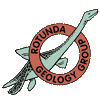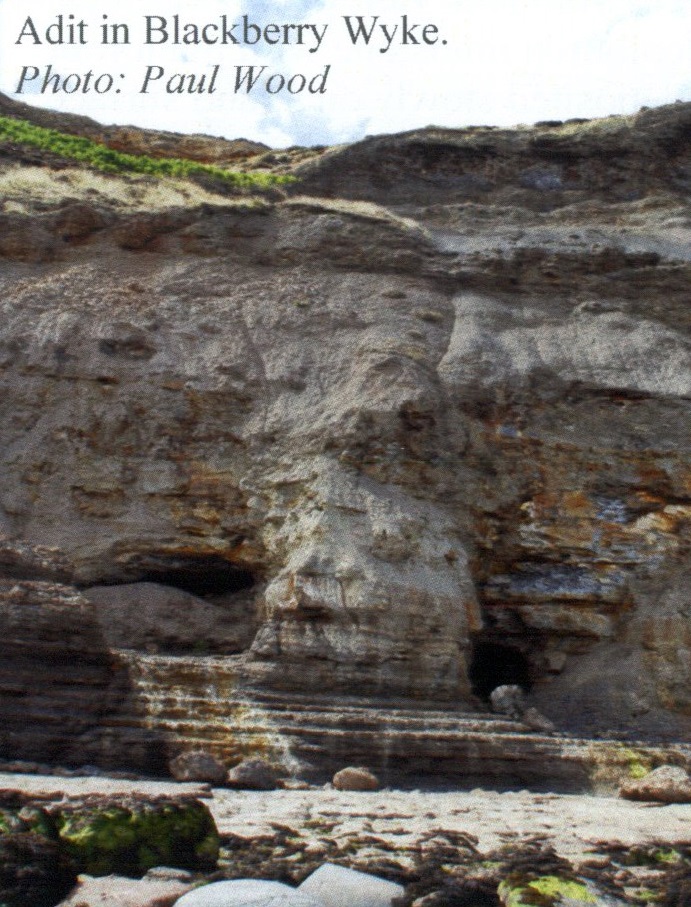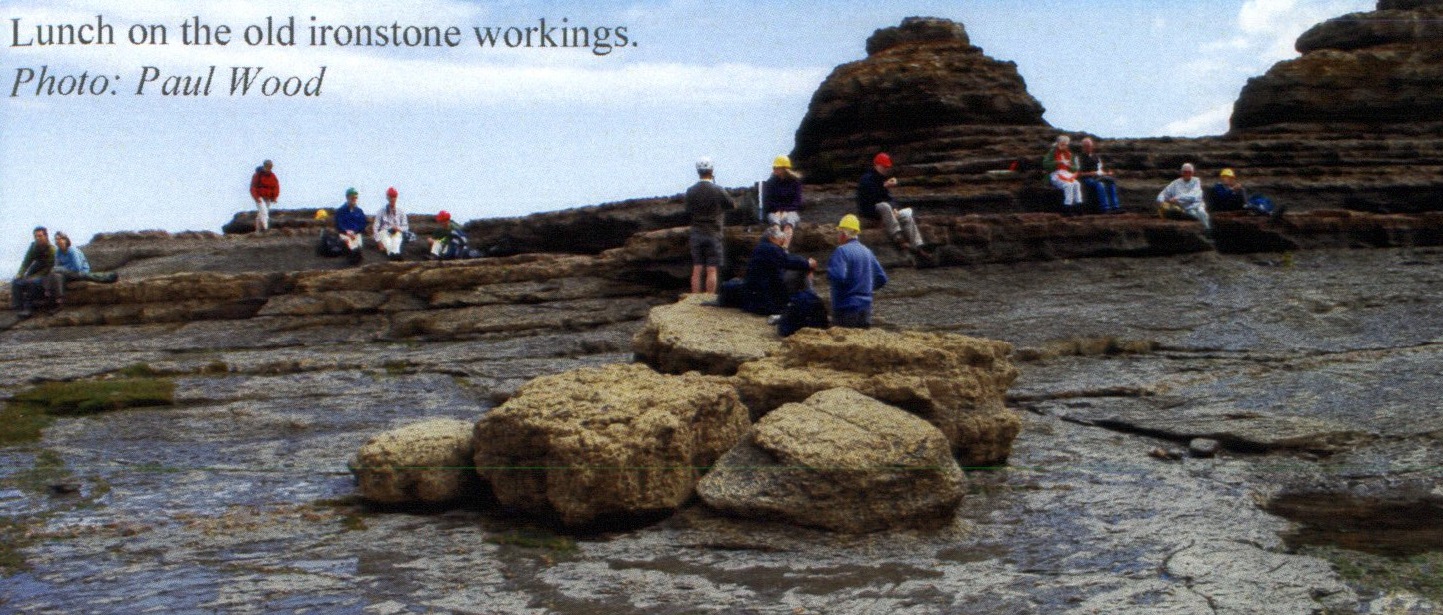10 August 2013 - Leader: Professor Paul Wignall
A good turn out of 26 members met on the promenade at Staithes on another warm day with sunny intervals. The excursion was to focus on the Lower Jurassic marine sediments from the Staithes Sandstone Formation to the Whitby Mudstone Formation, including the Cleveland Ironstone Formation and the 'Jet Rock', one of the best displayed Early Jurassic successions in the country.
The party were shown how to identify shallow marine depositional structures in the Staithes Sandstone where beautiful swaley and hummocky cross-stratification was seen. The stratigraphy of the Cleveland Ironstone Formation was clear in the cliff and the individual ironstone seams could be easily identified.
Where the Avicula seam dropped down to beach level the party had a hunt for fossils and a number of good Oxytoma cygnipes bivalves were seen. The cyclicity in the sediments with small scale sequences capped by chamositic oolitic ironstones was identified.
Working further up the sequence Paul pointed out some very distinctive gutter casts seen in cross section in the middle of the Penny Nab Member. Their method of formation is a bit enigmatic but probably related to localised erosive storm currents in the Jurassic shore-face cutting gutters, some of which were then infilled by shell debris. Walking towards Old Nab it was possible to see the narrow gutters in plan view criss-crossing the wave cut platform. Looking back towards Staithes a number of small normal faults are seen in the cliff face, and these cut throughout the wave cut platform all the way to Port Mulgrave.
Lunch was taken in sunshine at Old Nab on the remains of old mines cut into the Main Seam and just around the corner the remains of stall and pillar workings cut back by wave erosion were inspected. Further evidence of the mining in the area was seen in the cliff sections where collapsed roofing material contrasted with the underlying flat bedding. The extent of the workings is impressive.
Above the Main Seam is the transition into the Whitby Mudstone Formation Grey Shale Member. Working towards Port Mulgrave the overlying Jet Rock was identified as a black shale packed with large and oddly-shaped concretions and lots of ammonites; this marks the regional manifestation of a major climatic and oceanic event that saw the oceans warm and stagnate.
At Port Mulgrave the party inspected some giant concretions known as 'Whalestones'. After a vote of thanks the party climbed up to the coastal path viewing the old adits and tunnels in the cliff face. Many routes back to the car park at Staithes were investigated but everyone made it back.


